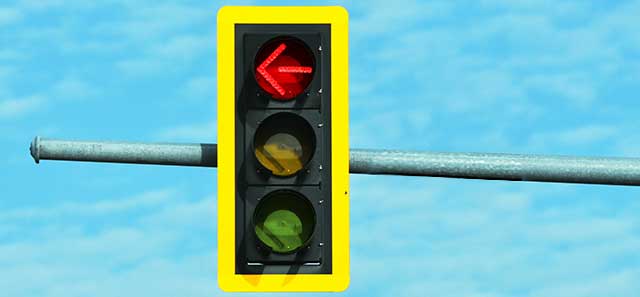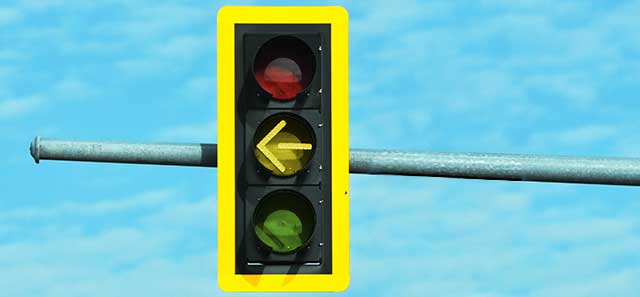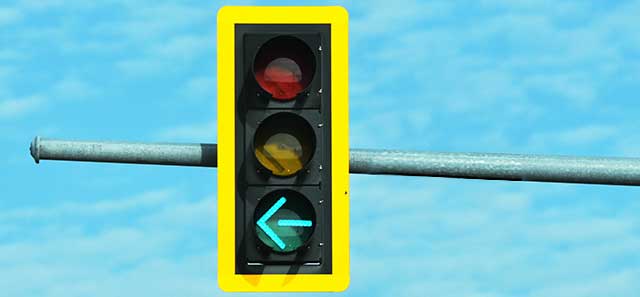Frequently Asked Questions About Traffic Operations
School Zone
- I saw a school flasher that doesn’t seem to be working correctly, who do I call to report this?
Please contact Traffic Operations at 321-455-1440. Callers should take note of the road they were traveling or the school the flashers are used to indicate, the direction they were heading, time of day and the day of the week. All of this information helps to solve the problem more efficiently.
Signage
- Cars parking on my street are causing a problem, how do I get No Parking signs installed?
In unincorporated Brevard County no-parking zones are established in accordance with Brevard County Policy BCC-80. The policy allows County staff to install no-parking zones when the current on-street parking condition:
- Has caused documented vehicular, pedestrian, and/or bicycle crashes, or could cause such crashes in the future.
- Causes a width restriction or sight obstruction affecting the safe movement of traffic, and/or emergency vehicles.
- Causes destruction or deterioration of public right of way.
- Causes a disruptive neighborhood nuisance.
In deed restricted communities or communities with a Homeowner’s Association (HOA) the HOA President must submit a request for the no-parking zone. In other communities the Public Works Department staff will need to coordinate with homeowners in the area regarding the request.
For more information, please fill out the Comment Form or make your request to the Engineering Division at 321-633-2077 and tell us the street and area that is problematic, how long the problem has been going on, and days and times that the problem is the worst. Pictures of the parking problem can help to speed up the process.
- I have a lot of children on my street, how can I get "Children at Play" signs posted?
Brevard County does not install "Children at Play" signs on county maintained roads. "Children at Play" signs give parents and children a false sense of security because studies conducted in locations with “Children at Play” signs show no evidence of reducing vehicle-pedestrian collisions, or lowering vehicular speeds. The Federal Highway Administration has revised the Manual of Uniform Traffic Control Devices to no longer include "Children at Play" signs which makes installation of such signs a violation of 23 Code of Federal Regulations (CFR), Part 655, Subpart F. Teaching children about the dangers of playing in or near roadways is the most effective way of protecting them from the dangers of vehicular traffic.
- A sign on my street has been defaced, knocked down, stolen, or is blocked by vegetation; will you come out and fix it?
Yes. Any time you see a traffic sign on a county maintained road that has been defaced or otherwise, please notify us during normal business hours at (321) 455-1440. It will be helpful if you can tell us the type of sign, the street it is on, and the nearest house number or cross-street.
Stop or Yield signs are an emergency and should be reported immediately. Please call Traffic Operations at (321) 455-1440 during regular business hours (Monday through Friday 7:00 AM – 3:30 PM) or after hours call the Emergency Operations Center at (321) 633-1766.
- We live in a private subdivision; can we order signs from you?
No. We are only able to sell to other government agencies, please check your local phone directory or online resources for traffic sign manufacturers.
- Someone in my family passed away in a traffic crash on a County road. I would like to put up a memorial marker for them. How do I do that?
Memorial Markers are allowed on County maintained roads for up to one year under County Commission Policy BCC-80. Requests can only be considered with the approval of the immediate family members. If approved, the applicant will incur the cost of design, construction, installation, and removal of the sign in accordance with the County Commission approved fee schedule. The sign can become the property of the applicant after the expiration period, if requested. For more information, please fill out a Comment Form or contact the Engineering Division at (321) 633-2077.
- I would like to put up Neighborhood Watch signs, how do I do that?
Crime Watch and Neighborhood Watch signs are provided by the Brevard County Sheriff’s Department. These signs cannot be placed on existing county posts and cannot block another sign. To obtain a Neighborhood Watch sign, please contact Brevard County Sheriff’s Office Community Services at (321) 264-7755.
- I noticed a damaged/missing sign on a state road, who do I need to call to have that fixed?
State roads located in Brevard County are maintained by the Brevard Operations Office of the Florida Department of Transportation (FDOT). State roads can generally be identified because they will be posted with signs indicating the designation followed by the route numbers of the road. Examples of state roads commonly known by their numbers are: I-95, State Road (SR) A1A, SR 520, and US 1. There are many other state roads that are commonly known by their street names, like S. Patrick Drive/SR 513, or Eau Gallie Boulevard /SR 518. The following link to the FDOT Highway Systems provides a complete list of FDOT maintained roads. The telephone number for the FDOT Brevard Operations office is (321) 634-6100. If you are unsure of the jurisdiction of the road you can contact the Engineering Division at (321) 633-2077 for assistance.
- I would like to raise/lower the speed limit on my street, what do I need to do?
Speed limits are established in accordance with the Manual of Uniform Traffic Control Devices (MUTCD) published by the Federal Highway Administration and State statute 316.183 - Unlawful Speed. State-wide, speed limits in residential and commercial zones are assigned as 30 miles per hour (MPH) unless an engineering study proves they should be raised or lowered. If a request to alter the speed limit on a County maintained roadway is received, an engineering study may be conducted in accordance with Section 2B.13 of the MUTCD if a change in roadway or traffic patterns indicates a speed limit study is justified in accordance with federal guidelines and state statutes.
A common reason for requesting a speed limit change is to lower the speed limit to encourage speeding drivers to slow down. Many studies have been performed to determine the effect of lowering speed limits on the speed of traffic. According to a document titled Synthesis Of Safety Research Related To Speed And Speed Limits conducted by the Federal Highway Administration:
“In general, changing speed limits on low and moderate speed roads appears to have little or no effect on speed and thus little or no effect on crashes. This suggests that drivers travel at speeds they feel are reasonable and safe for the road and traffic regardless of the posted limit.”
To prevent artificially lowered speed limits the MUTCD dictates that speed limits must be within 5 MPH of the 85th Percentile Speed. During a speed study our staff will deploy counters to determine the number and speed of vehicles traveling on the road. Staff will then identify the 85th Percentile Speed by calculating the speed below which 85% of all vehicles are traveling. If a large number of vehicles are currently exceeding the speed limit it is possible that the study will support raising the speed limit, instead of lowering it.
In cases where there is excessive speeding it is possible to contact the Sheriff’s Office to request stronger enforcement of the speed limit. The Sheriff’s Office can be contacted through the County telephone switchboard at (321) 633-2000, or the Sheriff’s Office web site at http://www.brevardsheriffsoffice.org. If a speed limit study would be more appropriate for your request, please fill out a Comment Form or contact the Brevard County Engineering Division at (321) 633-2077.
- I would like a four-way stop installed at an intersection, what do I need to do?
The Brevard County Engineering Division conducts all-way stop studies. All-way stop intersections have been proven to increase the frequency of certain types of crashes and to be less efficient than other types of intersection control under certain conditions. In order to ensure that an all-way stop intersection is the safest and most efficient means of managing traffic, potential installations must meet one or more criteria described within Section 2B.07 of the Manual of Uniform Traffic Control Devices published by the Federal Highway Administration (FHWA). Requests for an all-way stop on County maintained intersections may be studied if current conditions indicate a study is justified.
A common reason for requesting an all-way stop is to encourage speeding drivers to slow down. It is important to note that Section 2B.04, Paragraph 05 of the MUTCD states: “YIELD or STOP signs should not be used for speed control.” Installation of an all-way stop intersection solely to slow traffic would constitute a violation of 23 Code of Federal Regulations (CFR), Part 655, Subpart F and will not be considered. The FHWA based this decision on a large volume of research, some of which is available online, which indicates that:
All-way stops do not control speeds except under very narrow conditions, and drivers learn to ignore stops at intersections with unwarranted stop signs which promotes similar behavior at other intersections.
If you wish to request an all-way stop study, please fill out a Comment Form or contact the Brevard County Engineering Division at (321) 633-2077.
Street Lighting
- I live in unincorporated Brevard County and I noticed a street light not working at night, or on during the day. Who can I call to have it repaired?
If the street light pole is metal, you may report the trouble to Traffic Operations at (321) 455-1440. If the pole is wood or concrete, the trouble can be reported to Florida Power & Light (FP&L) at 1 (800) 4-OUTAGE, option #4 or online through the FP&L web site. Please have the pole number, main street, and house address or nearest cross street available.
- I would like to have a street light installed on my road. Who do I call to request this?
Brevard County only funds installation of street lights which will clearly illuminate a condition which could be dangerous to traffic. Such conditions include:
Sharp curves, Cul-de-sacs and dead end roads, or; Intersections
For requests to illuminate locations listed above, please contact Traffic Engineering at (321) 633-2077. If your request does not fall under the criteria above please contact FP&L at (800) 226-3545 for security lighting.
Speed Humps
- Too many people speed through my neighborhood, how can I get Speed Humps installed?
Speeding can be deterred by requesting local law enforcement patrol your area. If enforcement is ineffective in addressing the problem a speed hump study will need to be conducted to evaluate if speed humps could address the problem safely. A study is conducted because speed humps can cause unintended negative effects on the function of the surrounding street network and the safety of the public. The speed hump study is conducted in accordance with Brevard County Board of County Commissioners Policy BCC-91 and Brevard County Administrative Order AO-72. There are a number of criteria that will be evaluated associated with a speed hump request:
The subject street shall be a two-lane residential street, with a speed limit of 30 mph or less.
The speed hump(s) shall be on tangent sections, with limited horizontal and vertical curvature, without sight obstruction and have a minimum roadway length of 500 feet.
Requests for speed humps must be supported by a petition that must meet specific criteria.
The average daily volume of traffic on the roadway must be less than 1,500 vehicles per day as determined by a traffic count performed by the County.
Stronger enforcement can be requested from the Sheriff’s Office. The Sheriff’s Office can be contacted through the County telephone switchboard at (321) 633-2000, or the Sheriff’s Office website . If enforcement does not address the problem please fill out a Comment Form or contact the Brevard County Engineering Division at (321) 633-2077.
Traffic Signals
- I would like to request a new traffic signal, who do I contact?
The Brevard County Engineering Division conducts traffic signal warrant studies. While it is commonly perceived that traffic signals are safe and efficient, traffic signals have been proven to increase the frequency of certain types of crashes and to be less efficient than other types of intersection control under certain conditions. In order to ensure that traffic signals are the safest and most efficient means of managing traffic, potential installations must meet one or more criteria known as “signal warrants” to be considered. The signal warrants are described within Section 4C of the Manual of Uniform Traffic Control Devices published by the Federal Highway Administration.
Brevard County and the Florida Department of Transportation have additional Access Management Standards designed to maximize the efficiency of the road network. The standards dictate that signals should be at least a half mile apart for roadways with speed limits posted higher than 45 MPH, and at least a quarter mile apart for all other roadways.
If a request is received for a traffic signal on a County maintained roadway, an engineering study may be conducted in accordance with Section 4C of the MUTCD if current conditions indicate a traffic signal warrant study is justified. If you wish to request a traffic signal warrant study, please fill out a Comment Form or contact the Brevard County Engineering Division at (321) 633-2077.
- I would like to get a copy of the video recording at a traffic signal. How do I do that?
The cameras mounted to the traffic signal are part of a Vehicle Detection System (VDS) and their feeds are not recorded or continuously monitored. VDS technology uses video images to detect when vehicles are waiting at a traffic signal and notify the controller to cycle the signal to service the waiting vehicles.
- I noticed there are now flashing yellow left turn arrows at some intersections. What do they mean?
The flashing yellow arrow is the result of a national study conducted by the Federal Highway Administration (FHWA) to improve the safety of left turning traffic. The FHWA study showed that this new signal indication will move more traffic through intersections and is a low-cost safety measure to help prevent crashes. The flashing yellow left turn arrow prevents a dangerous condition called the Yellow Trap by providing a clear distinction between when motorists who are turning left are protected from oncoming traffic, when they must yield, and when they must stop.

Red Arrow
Stop, no left turns permitted. Cross traffic has the green light.

Yellow Arrow
Prepare to stop or complete your turn if you are in the intersection.

Flashing Yellow Arrow
Left turns are allowed after yielding to oncoming traffic and pedestrians.

Green Arrow
Indicates left turns are permitted. Oncoming traffic must stop.